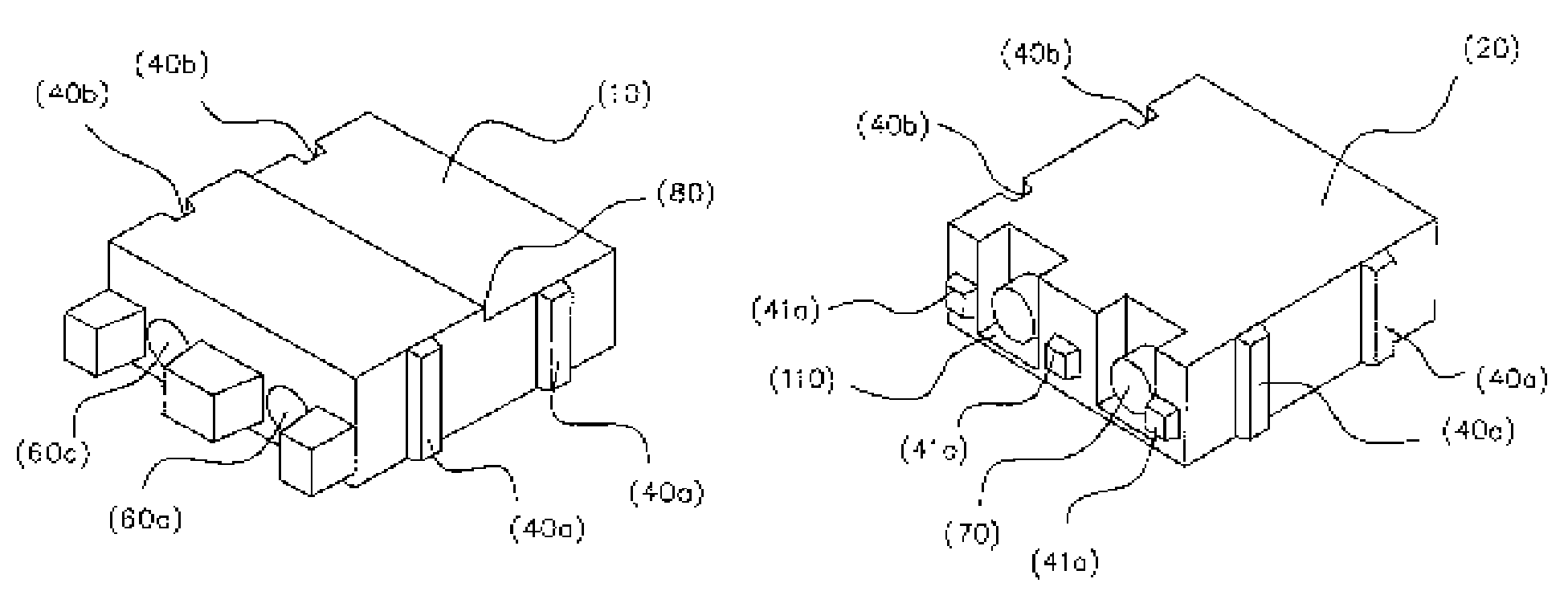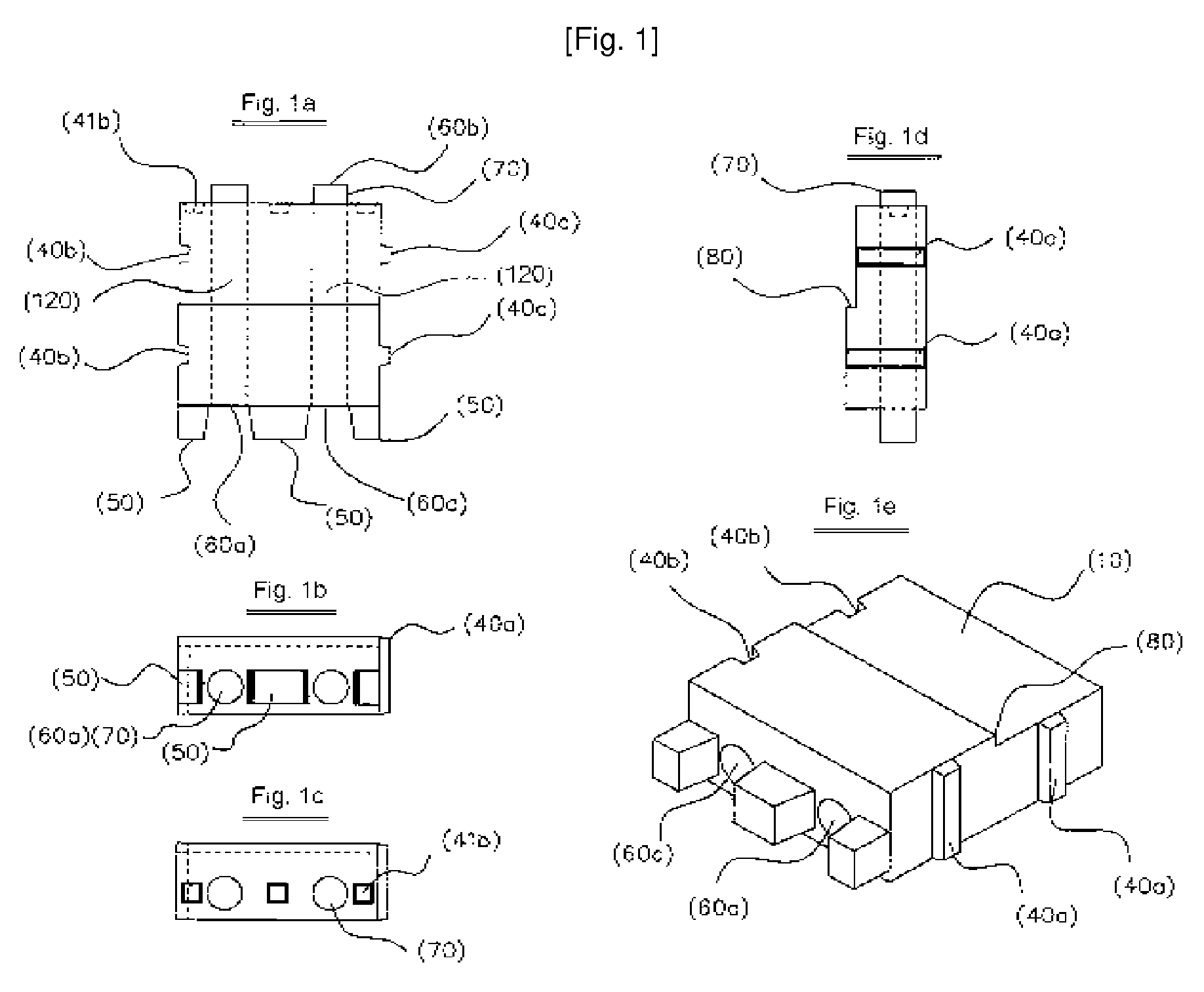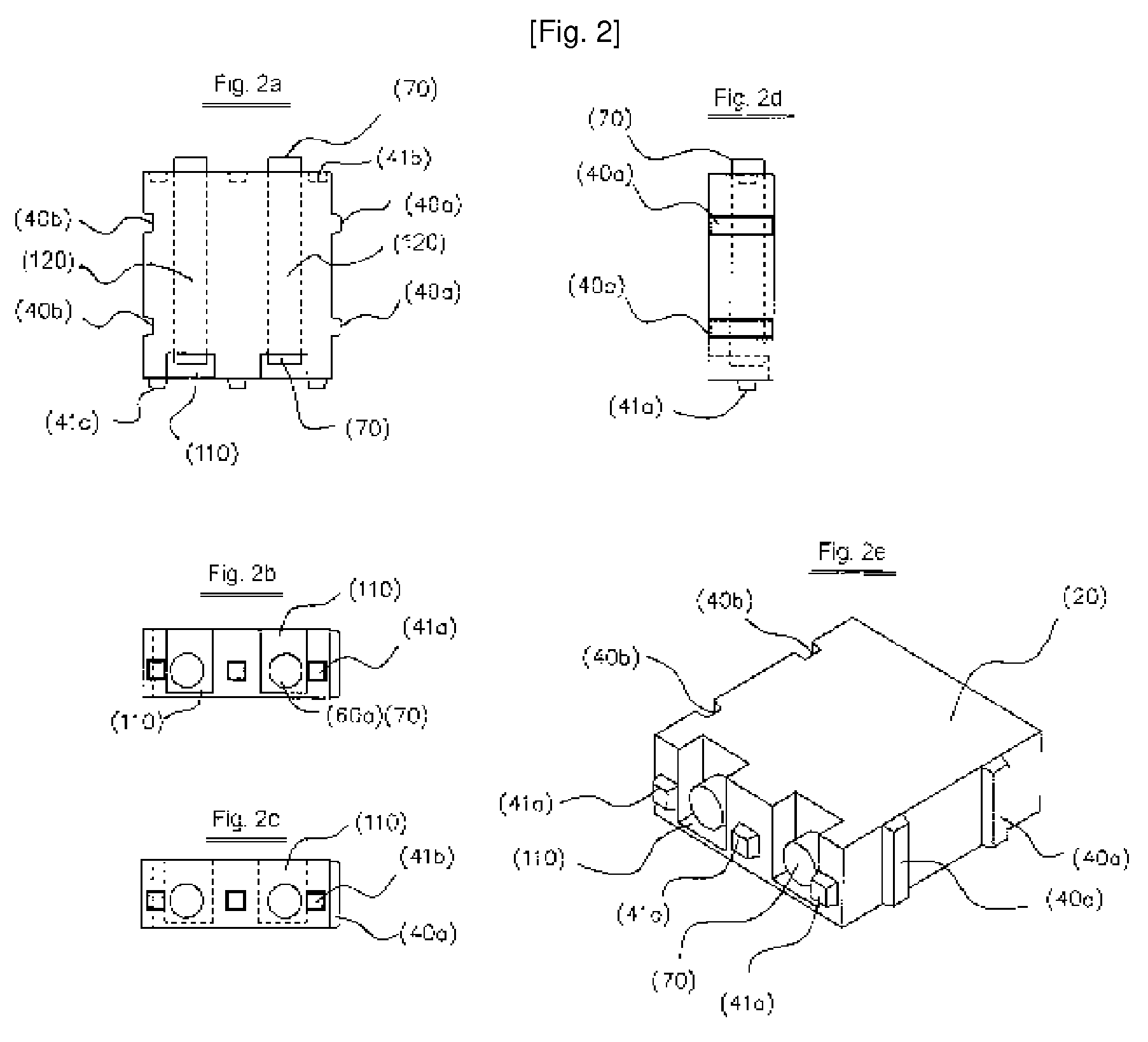Hydrophilic revetment block having seawater flow ports and construction method thereof
a hydrophilic revetment block and water flow technology, applied in piers, groynes, instruments, etc., can solve the problems of large volume of rubble, inability to allow people to easily access, and the seawater flow structure cannot adequately cope with the change of seawater level, so as to minimize seashore erosion, improve seawater quality, and reduce cost
- Summary
- Abstract
- Description
- Claims
- Application Information
AI Technical Summary
Benefits of technology
Problems solved by technology
Method used
Image
Examples
Embodiment Construction
[0036]Now, the present invention is described in further detail referring to the attached drawings. The hydrophilic revetment block having seawater flow ports of the present invention comprises a base block (10), an intermediate connection block (20) and an intermediate connection block having reservoirs (30).
[0037]Base Block
[0038]FIG. 1 illustrates a base block (10) of a hydrophilic revetment block having seawater flow ports (120) in accordance with the present invention.
[0039]At the top of the base block (10), a step for preventing slip (80) is formed to prevent the block from being slipped along the inclination by base pressure. When constructing the block, the inclination of stairs can be changed by adjusting the spacing of the step (80).
[0040]At the font of the block, projections (50) are formed to break waves and provide stairs for people depending on the change of seawater level.
[0041]And, one or more seawater flow ports (120) with circular or polygonal cross-section formed f...
PUM
 Login to View More
Login to View More Abstract
Description
Claims
Application Information
 Login to View More
Login to View More - R&D
- Intellectual Property
- Life Sciences
- Materials
- Tech Scout
- Unparalleled Data Quality
- Higher Quality Content
- 60% Fewer Hallucinations
Browse by: Latest US Patents, China's latest patents, Technical Efficacy Thesaurus, Application Domain, Technology Topic, Popular Technical Reports.
© 2025 PatSnap. All rights reserved.Legal|Privacy policy|Modern Slavery Act Transparency Statement|Sitemap|About US| Contact US: help@patsnap.com



